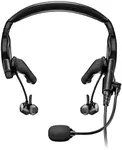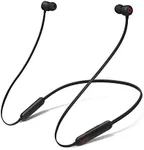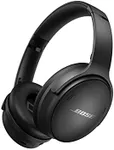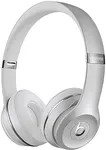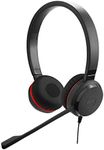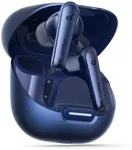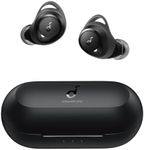Buying Guide for the Best Headphones For Flying
Choosing the right headphones for flying can make your travel experience much more enjoyable. Airplane cabins are noisy, and long flights can be tiring, so having headphones that provide comfort, good sound quality, and effective noise reduction is essential. When shopping for headphones for flying, it's important to consider how long you'll be wearing them, how well they block out noise, and how easy they are to use and carry during your journey. Understanding the key features will help you find a pair that matches your travel habits and personal preferences.Noise CancellationNoise cancellation is a technology that reduces unwanted ambient sounds, especially the constant hum of airplane engines. This feature is important because it allows you to enjoy music, movies, or simply peace and quiet without having to turn up the volume too high. There are two main types: passive noise isolation, which relies on the headphone's physical design to block noise, and active noise cancellation (ANC), which uses electronic processing to cancel out sound. For flying, ANC is especially effective. If you fly often or are sensitive to noise, prioritize headphones with strong ANC. If you only fly occasionally or don't mind some background noise, passive isolation may be enough.
Comfort and FitComfort and fit refer to how the headphones feel on your head and ears during long periods of use. This is crucial for flights, as you may wear them for several hours at a time. Over-ear headphones usually offer more comfort and better noise isolation, but they can be bulky. On-ear and in-ear options are more compact but may not be as comfortable for everyone. Consider the padding, weight, and adjustability. If you have sensitive ears or plan to sleep with your headphones on, look for lightweight models with soft ear cushions and an adjustable headband or ear tips.
Battery LifeBattery life is how long the headphones can operate before needing a recharge, especially important for wireless and noise-cancelling models. Long flights can last many hours, so you want headphones that can last at least as long as your journey. Some headphones offer 20 hours or more on a single charge, while others may only last a few hours. If you take long-haul flights or want to use noise cancellation throughout your trip, choose headphones with extended battery life. If you only take short flights, a shorter battery life may be sufficient.
PortabilityPortability refers to how easy it is to carry and store your headphones when traveling. Bulky headphones can take up valuable space in your carry-on, while compact or foldable designs are easier to pack. Some headphones come with a carrying case for added protection. If you travel light or have limited space, look for headphones that fold flat or come with a travel pouch. If you don't mind carrying a larger bag, you might prioritize comfort or sound quality over size.
Wired vs. WirelessWired and wireless headphones each have their advantages for flying. Wireless headphones offer freedom from tangled cords and are convenient for moving around, but they rely on battery power. Wired headphones don't need charging and can plug directly into the airplane's entertainment system, but the cord can get in the way. Some headphones offer both options. If you want flexibility and plan to use in-flight entertainment, consider headphones that can be used both wired and wirelessly. If you prefer simplicity and never want to worry about charging, wired may be best.
Sound QualitySound quality is how clear and enjoyable the audio is when listening to music, movies, or podcasts. Good sound quality can make a big difference on a noisy plane, helping you relax or enjoy your entertainment. Some headphones emphasize deep bass, while others focus on balanced sound. If you are an audiophile or care deeply about music, look for headphones known for high-quality sound. If you mainly use headphones for movies or podcasts, a balanced sound profile will be sufficient.
